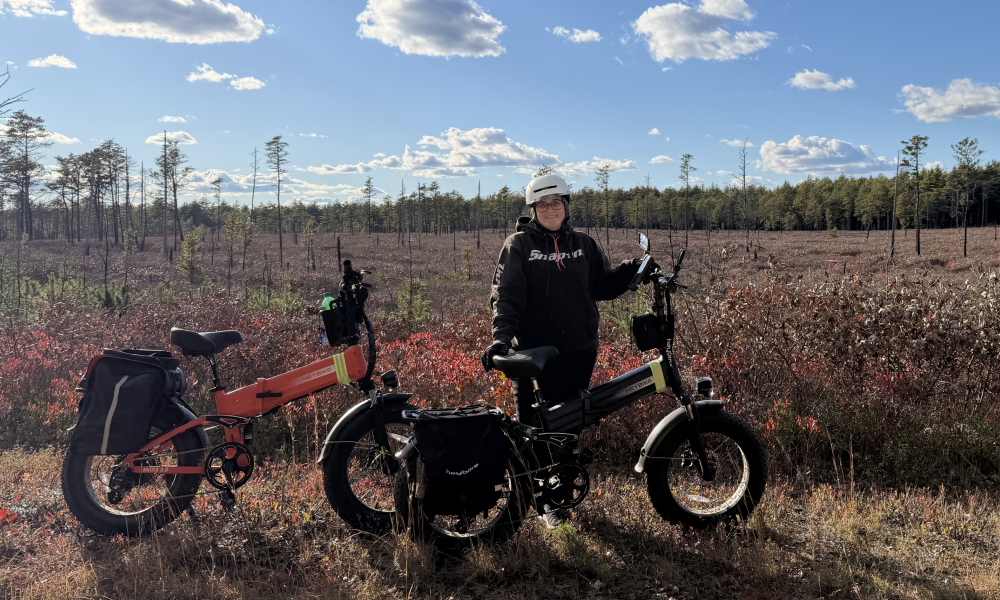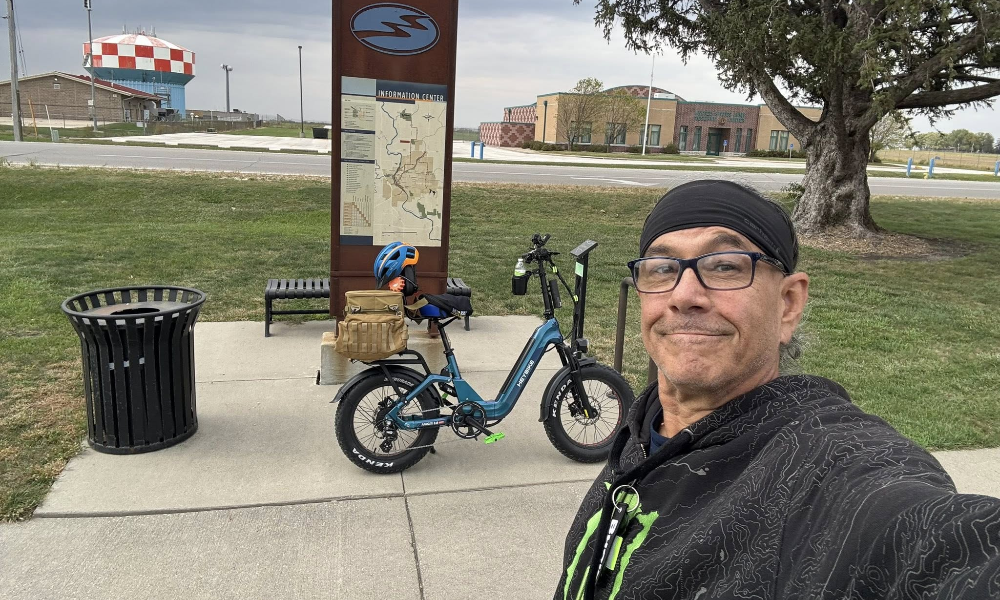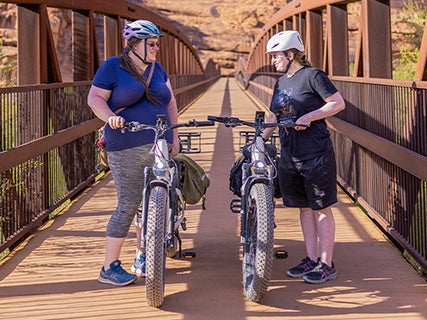Cycling should be a pleasurable experience. However, some folks are often intimidated by aggressive riding positions. Most of them focus on the saddle height and ignore the handlebars. If you're curious about how to raise bike handlebars, you've come to the right place. All you need is an Allen key and some spacers.
Reasons to Raise Handlebars On Our Bike
Raising the bicycle handlebar ensures a comfortable ride. If the handlebars are too low, you put too much pressure on your back, neck, and arms. If you're a recreational rider, you should improve your riding posture to keep the back pain at bay.
What Are the Handlebar Components On A Bike?
The handlebar can transform the feel of your ride. Besides affecting your comfort, it controls how the bike handles and the riding position to adapt. Some of the key components are:
The stem
It connects the steerer tube to the handlebars. Stems come in two varieties: quill or threadless. A quill stem is held in place by expanding the bolt on the steerer tube, while a threadless stem expands the wedge bolt to the steerer tube. Since quill stems come with measurements, you can know how much to raise the handlebars. If you exceed the limit, the stem could fall off.
Spacers
They give the handlebars extra height - you can lower or raise them.
Faceplate
This is the furthest part of the stem from the rider. It's bolted and fixes the handlebars in place.
Headset
It's the 'ring' or 'bearing' on the top of the frame below the spacer.
Pinch bolts
They connect the stem to the steering tube. As the name suggests, they pinch the stem on the tube.
6 Options to Raise the Bike Handlebars Explained
Before you adjust the handlebars, you should determine the types of bikes you have. For some models, you may need a few tweaks to raise them.
1. Adjust the headset spacer
If your bike has circular rings, you can move the spacers above or below the handle height. To adjust the headset spacers, loosen the bolt of the stem, detach the top cap, and slide off the steer tube. Then, move the spacers below the headset and return the top cap.
2. Flip the bike stem
When you shift the spacers, you increase the height of the handlebar. If the elevation is not sufficient, you can flip the handlebar stem.
Hold the bike firm to the ground, loosen the bolt that attaches the stem and handlebar, and remove the faceplate. Allow the handlebar to fall gently, flip it over and then reattach it back.
3. Change the bike stem
If the bike has a small stem, you can change it to a bigger one. For example, the TRIWONDER stem allows you to adjust the handlebar to 60 degrees - you can also lift the handlebar to 90-130mm. The TRIWONDER stem is compatible with MTBs and BMX bikes.
4. Adjust the handlebar angle
You can adjust the bicycle handlebars' angle by raising them a few inches. This improves gear changing and prevents overreaching the bike brakes. To adjust the handlebar, you should:
- Loosen the screw on the stem
- Lift the bar and adjust the angle
- Tighten the bar to the preferred location and test it
5. Invest in a bike stem riser
The stem riser can adjust the bike a couple of inches. To attach a stem riser, you should:
- Remove the handlebar stand
- Slide in the stem riser and fix it in the correct position
- Reinstall the handlebar
For road bikes, cross bikes, and MTBs, you can use the TRIWONDER Bicycle Bike system.
6. Invest in a bike riser bar
If the other methods don't work, you can use a riser bar. Essentially, it improves the handlebars by a couple of inches. While there are many riser bars to use, the UPANBIKE river bar works seamlessly. It features aluminum construction and can suit most MTB and road bikes. The riser bar can increase the height up to 30mm.
How to Raise A Road Bike's Handlebars
E-bikes are not created equal. Some doesn't come with an adjustable stem. This means that you don't need to flip the stem or move spacers.
However, some bikes comes with adjustable handlebars, you can raise or lower them to suit your needs. If you're not sure how to raise handlebars on a bike, this guide is for you.
1. Setup
Before you start working on the bike, you should place it on a stand. If you don't have one, you can straddle your bike. Someone can also hold the bike as you work on it.
2. Moving the spacers
To start with, you should move the spacers above the stem (to raise the handlebars) or move the spacers below the stem (to lower the handlebars). Here is a step-by-step guide:
- Step 1: Loosen the pinch bolts to facilitate the removal of the top cap.
- Step 2: Remove the top cap from the steerer tube. Also, remove the spacers between the steerer and the stem.
- Step 3: Loosen the pinch bolts such that none is too much tighter or loose. You can slide the stem too.
- Step 4: Make the adjustments on the spacers.
- Step 5: Slide the stem back on the tube with the top lid above the steerer tube. This will make sure the top cap clamps on the steer tube. You may want to confirm there's enough slack on the brake cables.
- Step 6: Replace the cap and tighten it to get some resistance. It also preloads the headset.
- Step 7: Align the stem with the top tire and tighten the pinch bolt. The goal is to align the stem to the steer tube.
- Step 8: Check the headset. Hold the front brakes and lock the handlebars. You should check if the steerer brakes are moving back and forth (inside the bike's frame). To avoid any movement, loosen the pinch bolts and tighten the caps. Repeat the process until there's no movement on the handlebars. If the handlebars of the Ebike don't move smoothly, the pinch bolts could be too tight.
3. Flip the stem
Here are some steps you might follow:
- Step 1: Stick a masking tape to the handlebars such that they align with the faceplate. This ensures as you put everything together, you achieve the same angle.
- Step 2: Loosen the four face bolts in an X-shape. As you do this, support the handlebars and don't let the cables take the weight. You're better off if you ask for help.
- Step 3: Follow the first three steps on how to move the spacers. Flip the stem over with the steerer tube.
- Step 4: Place the handlebars back to the stem and attach the faceplate. Use a masking tape to ensure the handlebars are in the same position as before. If there are some gaps between the stem and the faceplate, tighten the bolts. Keep in mind that any uneven gap could cause discomfort.
4. Adjust the stem
First, you should locate the screw and adjust the stem to suit your best position. If there's any strain on the cables, you can tighten the screws.
To adjust the handlebars, you should open the quick-release clamp on the handlebar. Then, move it up and down to suit your desired position. Be sure to check the brake pedals such that there's sufficient slack.
These handlebar adjustments will boost your comfort. This may look like an uphill task but once you get them right, you'll feel the impact on your riding experience.
How to Raise A Mountain Bike's Handlebars
To adjust the handlebar of the mountain bike, you need a multi-tool or a set of Allen keys and a torque wrench. First, you should determine the type of mountain bike you have. Here are the steps to follow:
- Remove the long bolt on the stem. This is the L-shaped piece of metal that keeps the handlebars attached to the bike. Keep it safe as you will need to use it again.
- Use the Allen keys to loosen the smaller bolts.
- Pull the handlebars with care. If you're not cautious, you may end up bending them.
- Add a spacer to the bike, you can also lower the handlebars to the bike.
- Replace the handlebars and cap them. Be sure not to overstress them.
- Check if the stem is well replaced. Are the handlebars moving freely? If they are not, you can loosen them a bit.
Wrap up
Raising the handlebars of your bike makes it comfortable, you can enjoy long rides without pain. To adjust the handlebars, you should determine whether you're enjoying the ride or not. It could take a few attempts before you get it right, but you'll eventually find a sweet spot that will make you a better rider. If you've been straining your neck or back when cycling, it's time you adjust the height of the handlebar.



Share:
Choose the Bicycle Brake Light for Safety Purpose
What Is Electric Bike Insurance?